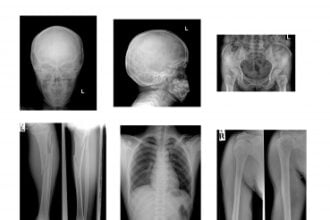The federal dollars in the HITECH act, and much of the enthusiasm for new innovation in the healthcare IT space is predicated on the assumption that better access to information will result in better and cheaper care. Avoiding unnecessary duplicated studies, especially, expensive medical imaging, is one way that’s supposed to happen.
The federal dollars in the HITECH act, and much of the enthusiasm for new innovation in the healthcare IT space is predicated on the assumption that better access to information will result in better and cheaper care. Avoiding unnecessary duplicated studies, especially, expensive medical imaging, is one way that’s supposed to happen.

As a medical imaging specialist, I can attest to the fact that unnecessary and wasteful imaging tests get ordered all the time, at significant cost. It see it many times a day, and I’m a believer in the power of increased access to health records.
Two articles have recently been published in the medical literature that aim to test this assumption. And the results seem to be in conflict. The first article, published in the Journal of Health Affairs, examined access to medical imaging and results, and found that physicians with electronic access were actually more likely to order additional imaging tests. The second article, published in the Archives of Internal Medicine, found that doctors ordered 49% fewer lab tests after the introduction of an electronic health information exchange (HIE).
So, what are we to believe? I’ll try to make some sense of this.
First off, there are some important differences here.
- These studies did not look at the same outcome. The first study found an increase in medical image ordering. The second study found a decrease in lab test ordering. That’s not good news for the pro-electronic access / EHR innovation camp (me). Medical imaging studies typically cost around 10-1000 times more than laboratory studies.
- These studies did not look at the same population or the same intervention. The article that found an increase in ordering examined looked at differences between doctors with access to imaging results versus those that didn’t have access. It didn’t look at any change in access. The article that found a decrease in ordering looked at how things changed after a health information exchange was introduced. Neither method is scientifically perfect, and both can introduce bias. This is important, because I think bias explains our conflict.
- There are other major differences between these two articles. One is best categorized as a “retrospective cohort” study, and the other is a “case-control” type study.
Bottom line: these two studies are apples and oranges.
Bias is the term scientists use to explain variables that can skew results. I think that’s the case here.
the availability of an electronic health record in itself had no
apparent impact on ordering; the electronic access to test results appears to have been the key.
Exactly.
Second, the study that examined adding electronic access, through a health information exchange, did not find an increase ordering. That’s the second study, that looked at lab ordering.
The second study, which looks at the EHR/HIE as an intervention, better represents the changes prescribed by the HITECH act. What would the first study have shown if they looked at the doctors without access to imaging results and then gave them that access through an electronic image exchange? We don’t have the answer, but it’s the more important question.
So, when you consider the differences between the studies, the conclusions are not that contradictory. And, the first study may not necessarily be bad news for the EHR and HIE believers. Most importantly to me, as a medical imaging specialist, it doesn’t necessarily demonstrate that HIE and EHR access to imaging results will increase ordering. I continue to believe strongly that better patient and doctor access to imaging is key to controlling costs, and improving quality. We need to extract more value from our medical imaging, by giving more people access.
If the internet has taught me anything, it’s that giving more people more access to more information is always a good thing.
It’s going to be a while before we have enough EHR and HIE adoption to be able to really measure its value. We must give the EHR/HIE experiment some time to run before we draw any broad conclusions.
A final thought
Dr. Farzad Mostashari, the federal health information technology czar recently said:
When we talk about health IT reducing healthcare costs, it’s not going to come about by more or fewer lab tests. The big savings will come from improvements in the coordination of care.
That’s true, but fewer unnecessary lab tests and fewer unnecessary imaging tests is part of the improvement in coordination of care. Getting more value out of our medical imaging is another part.






